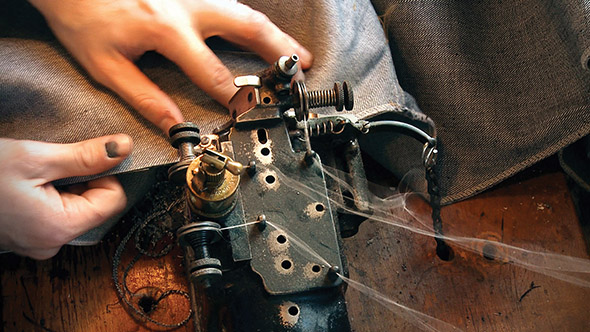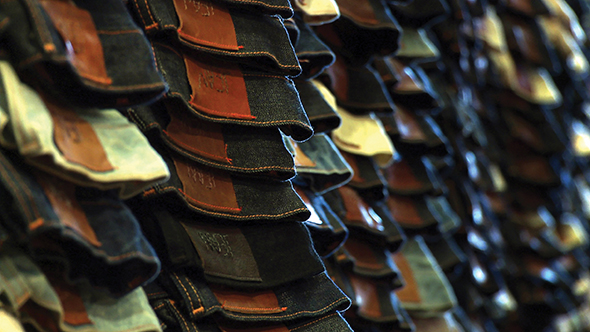American Jeans
The story of denim is a true love story steeped in American culture and has all the elements of a true love story. This story has been told compellingly with a sharp attention to detail in Christian D. Brunn’s documentary, Blue Gold: American Jeans. Brunn, a Denmark native holding a Masters from the Aarhus School of Architecture, clearly conveys a deep respect for denim through an engaging telling of its inception, rise, and unparalleled staying power in an otherwise tumultuous and fickle industry. The world itself is seemingly unable to break its gaze from the mystery surrounding denim’s inherently rebellious, gritty, and cool nature, through which America has managed to conceive this fashion icon.

Brunn’s documentary is laden with informational tidbits peppered throughout a fascinating chronology of American denim. As explained in Blue Gold, the word “jeans” literally translates to cowboy or cowboy pants in many languages, such as Danish, Spanish and Chinese, which affirms a strong correlation between denim and its unmistakable American roots. According to Blue Gold, these roots date all the way back to the gold rush era, when tailor, Jacob Davis, evolved the work pant by adding rivets to common stress points—where they still remain on denim to this day. Lacking means to patent these popular, riveted work pants, Davis partnered with a Bavarian dry goods merchant in San Francisco by the name of Levi Strauss and thus, the iconic blue jean was born. Since their inception, jeans have become even more intricately intertwined with Americana through Hollywood’s jean-clad cowboys, as well as the post-war, motorcycle-riding, rebellious youth who sought to buck middle class standards. By the seventies, jeans had the attention of the world, including high-end European fashion houses, which resulted in further denim evolution that paid attention to construction and fit needs unique to men and women. This could simultaneously be seen as the climax of denim as well as the start of its descent from a pure, simplistic and quality-driven heritage.
As the documentary moves through later times in denim’s auspicious history, major names in denim populate the film where they divulge fascinating industry information, including Calvin Klein, Adriano Goldschmied, Mark Ecko, and David Mechaly, to name just a few. Paige Adams-Geller, who was the original fit model for some of the top denim brands and is now the first and currently only female denim brand founder, is present in the film discussing the ever-vital fit of denim on the female posterior. Paige obviously knows a great deal about the importance of denim fit for women, putting to use her expertise with her highly successful self-named denim brand, Paige Denim.

What this engaging tell-all leads up to is the resounding message that denim, in its purest form, comes from roots saturated with American pride and exceptionally high integrity. Like all areas of the fashion industry, denim has seen economic interests force production outside the U.S. and some integrity has been lost. Though many production processes- like stone washing, chemical dying, and sand-blasting- proved to be damaging to the environment and harmful to factory workers have largely been addressed and rectified, there persists an economically-driven production standard. The tone in Blue Gold manages to strike a delicate balance of genuine love for jeans while conveying the need for responsibility. And, with modern society’s rising demand for transparency, those who hold denim and its rich heritage dear are ready to see a movement in denim production that returns to the roots of simplicity and American-made pedigree.
Fortunately for those who indeed relished in Blue Gold’s captivating perspective into the mystery behind denim’s lasting allure, there’s more to come. Brunn explains there will be episodic releases in the next several months featuring more interviews with denim icons, some of whom we perhaps didn’t see quite enough, like Paige Adams-Geller. Brunn explains there was a good deal of valuable material that inevitably made it to the cutting room floor. We can only assume these releases will add to the sense of feel-good nostalgia created in Brunn’s full-length documentary and have denim lovers everywhere inspired to demand sustainable and transparent production once again deserving of this vital piece of American history.
Text by Jennifer Moulaison

